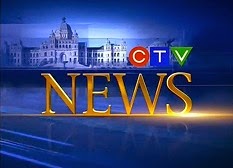Posted: January 25, 2008
Houston Today Wednesday, March 5, 2003 No. 10 by Jennifer Lang - (Reporter for the Terrace Standard Newspaper - Terrace, B.C.)
Move over, Kermode bear. A flying saucer might make a more fitting symbol for Terrace.
It turns out Terrace is B.C. capital - and one of the top spots in the country for sightings - according to a national survey released last week.
In fact, a record number of sightings here helped push Terrace into the 2002 Canadian UFO Survey's top 10 for the first time.
Remarkably, Terrace is in third place - behind such urban heavyweights as Toronto and Vancouver.
The survey counted 25 eyewitness reports from here in 2002.
Calgary and Hamilton also appeared in the top 10 for the first time. Other urban areas reporting a significant number of sightings were Winnipeg, Edmonton, Ottawa and Whitehorse.
In all, the survey compiled 483 eyewitness reports from across the country, with one-third, or 176, originating in Canada's western most province.
Contrast that with just six UFO sightings reported in Saskatchewan last year. Joining Terrace in the top four is Houston, B.C., home of Brian Vike, the northwest's resident UFO researcher.
Vike, who investigates reports of UFOs and other unexplained phenomena, including crop circles, says his phone has been ringing off the hook since the survey was released last week.
Terrace residents have been seeing some curious objects in the sky over the past year, according to Vike's HBCC-UFO website.
Some flying objects were barrel-shaped, white others looked more like cigars or had blinking lights.
Unlike stars or airplanes, they moved oddly over such familiar locales as Braun's Island, Jackpine Flats and the southwest skies toward Prince Rupert.
Vike is one of the contributors who assist in compiling rgw survey, which consists of reports from regionally-based UFO researchers from across Canada that are compiled into one database.
The survey is headed up by Geoff Dittman and Chris Rutkowski of Ufology Research of Manitoba (UFOROM), a prairie based group that has been compiling UFO reports since 1989.
The survey defines UFOs as any unknown flying object seen by a witness.
That means the survey included reports that were later found to be known objects, such as stars, planets, meteors, or aircraft.
The researchers believe it's important to verify that eyewitnesses who report UFOs have indeed seen something- rather than imagined it.
The survey suggests most UFOs are actually conventional aircraft or an astronomical object.
On average, about 13 per cent of sightings are unexplained. Last year, 87 cases were unknown out of 483.
"As with previous studies, the 2002 Canadian UFO Survey does not offer any positive proof that UFOs are either alien spacecraft or a specific natural phenomenon," the report says.
Most sighting, about four out of five, occur at night, but reports of "daylight discs" accounted for 15.8 per cent of sightings last year.
Sightings in 2002 peaked during the months of July and August, but also in February, according to the report, a pattern that held true in the northwest.
The typical UFO sighting is witnessed by two people, suggesting the witnesses are actually seeing something real, the survey says.
The report assigns a "strangeness" rating between one and nine to each sighting, with nine being the strangest.
The 2002 survey's average strangeness rating is 3.6 - which is not very strange at all, the report says.
"Hollywood-style flying saucers are, in reality, relatively uncommon in UFO reports."
Subscribe to:
Post Comments (Atom)













































































No comments:
Post a Comment